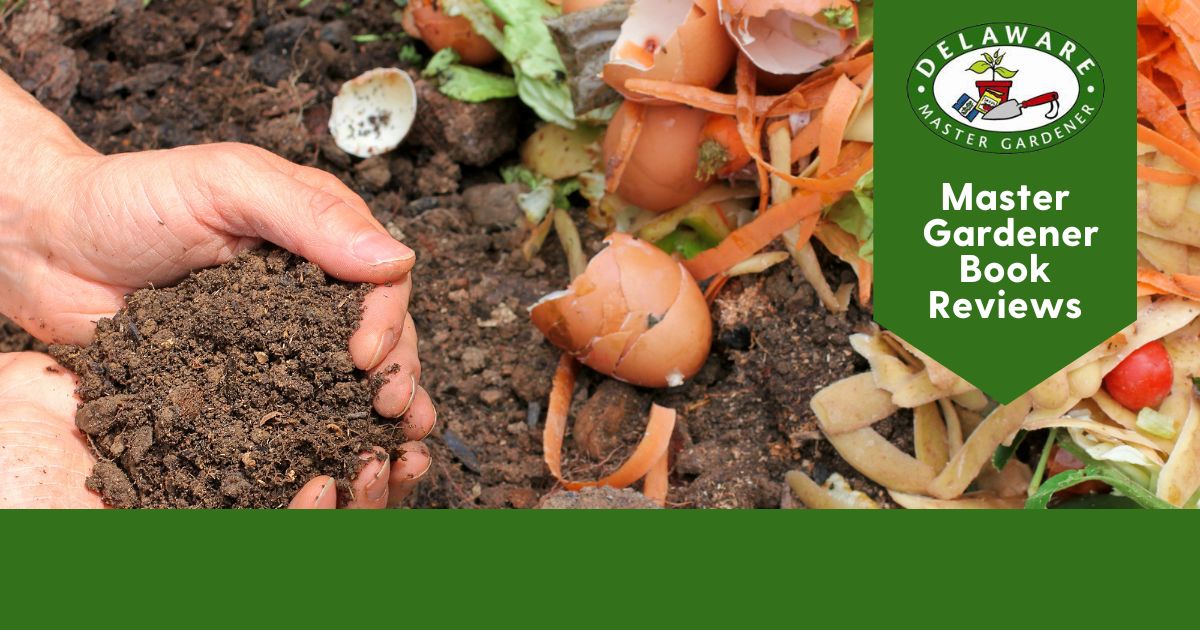
Category: Cooperative Extension

Master Gardener Book Review: Let it Rot!
September 08, 2022 Written by Susan Graves
Let it Rot! Has one goal: to demystify composting and remind us that it can be easy and fun and accessible to the masses. With a little effort and a little artistry, you can compost successfully and have fun creating beautiful, nutrient-rich soil. Any garden, whether for growing ornamentals or food, will benefit from the use of composted soil.
Composting is the process of creating that nutrient-rich soil, also known as “humus.” The art of composting has been around as long as ancient farming when it was noticed that plants grew best in fertile soils and those soils had appeared — probably under trees or on forest floors — after leaves, bark and plants had broken down over time.
Nature creates the conditions of decay, well, “naturally.” Given enough time, all living elements break down in nature. By harnessing and speeding up that natural process, you enter the art of composting. Whether on a small scale for your kitchen garden or on a larger scale for your organic farm, composting and creating humus is going to make you successful, give you a feeling of accomplishment and help you look at the world a little differently.
The best part of Let it Rot! is its layout: each chapter describes a step in successful composting, such as common questions, getting started with a container or method that works for you and even how to use the finished humus.
Each chapter starts out simply (for beginners) and moves into the technical (for the experienced). If you are not a “composting geek,” you are encouraged to skip the technical parts and move to the next chapter. (Imagine! A book you don’t have to read all the way through if you don’t want to!)
An example of the chapter progression: Chapter three starts out explaining decomposition by mentioning the basics needed: carbon, nitrogen, oxygen and moisture. By reading further, the scientific details of bacteria, oxidation, specific temperature and enzymes are charted out. If you don’t need those details or they don’t thrill you, move to chapter four.
Chapter four answers the question, “what can I compost?” in fantastic detail. As a successful composter for 30 years, even I discovered new materials I can add to my tumblers! Did you know you can compost feathers?? Those who raise chickens or other fowl can — feathers are rich in nitrogen!
Chapter seven discusses the many varied container methods of composting: tumblers, bins, piles and sheets. If you are a do-it-yourself type, diagrams will assist you in building your own. (Check out the Vegetable and Food Demonstration gardens at your local Extension office to view many of these types of containers in use and the various stages of compost within. You will definitely find inspiration!
Different composting methods fit different lifestyles and tools are discussed, from the simplest method using the most basic tools all the way to a method that involves using a tiller! Chapter nine discusses speeding it up — after all, you have put effort into your compost and if you want to make it work faster for you, there are ways to get it done quickly.
After the successful “dos” are covered, there are some “dont’s” as well and they are laid out very simply and concisely in chapter 10. But the good news is that even if you make a few mistakes, in the end, you are very likely to end up with good, usable humus that will enhance your growing experience.
By the end of Let It Rot!, you will have gained an appreciation of how living materials work together to return to the soil they came from and how you can harness that power. Whether you want to compost occasionally or year-round, in a small space or using multiple graduated piles, this is the book to start you out and help you find joy in looking at the world and especially garbage, differently.
Where can I find it?
Let it Rot! is available in various editions in Delaware Libraries, and the most recent 3rd edition can be found at Barnes and Noble stores or on Amazon.
